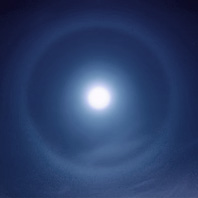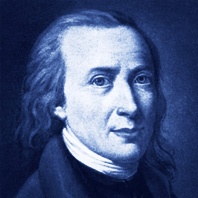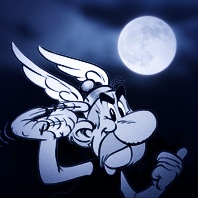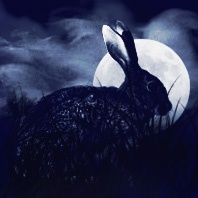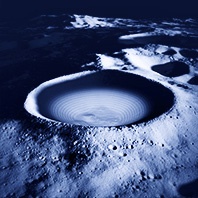Sir Charles Spencer Chaplin (1889–1977) is considered one of the first movie stars ever and made film history with his acting and his works. He is also one of the few artists who managed the transition from silent films to sound films.
Because of using archetypal imagery and symbols in his films, it is natural that the moon could also play a part somewhere. We found four references:
Read more
In his first solo album »The Dream of the Blue Turtle« from 1985, Sting published the Song »Moon over Bourbon Street«, which is not just about the Moon. He sings about the existence as a vampire, which he had turned into years ago, and which condemned him to follow passers-by in this street, in the moonlight and the pale lamplight …
It is characteristic for this song that it spares the bloody part of the crime and only leaves an indirect description. The word vampire is also not mentioned, however, it is clearly focused on, for example in the following line: »… you’ll never see my shade or hear the sound of my feet …«
Read more
We would like to turn our attention to two interesting types of light apparitions around the Moon: halos and coronas. Both are optical phenomena in the atmosphere that, if looked at from a physical point of view, come about in different ways and also look dissimilar.
A halo (left picture) develops through refracting ice crystals and creates a clearly defined light ring around the Sun or the Moon, whereas the surface between the celestial body and the ring, almost appears to be empty. Light spots, light arches and pillars can also emerge.
Read more
When the German author Michael Ende wrote »The Neverending Story« from 1977 to 1979, he created a milestone amongst the fantasy children and youth literature. The story about the shy boy Bastian Balthasar Bux on his adventure trip through the world of Fantastica, fascinated millions of readers of all age groups and has been translated into 40 languages up to date.
Read more
… this line from the poem “Evening Song” from 1778, by the poet Matthias Claudius (1740–1815), belongs to the best-known poems in German literature, not least of all because it was set to music many times; hence, it does not only remain in one’s memory because of its lyrics, but also because of its melody. Especially as a lullaby, everyone has surely heard it before or even sang it to the children:
Read more
Who doesn’t know them, the fearless Gauls Asterix and Obelix, who have been making the hearts of comic fans leap for joy since decades and who impress again and again through witty texts and masterful drawings. The stories originate from the pen of the French illustrator Albert Uderzo (1927–2020), who created, together with his fellow countryman René Goscinny (1926–1977), the first comic in the year 1959, and with that, brought the adventures of the brave Gaul to life.
Read more
What does an astronaut has on his wrist? You are not going to believe it, but it is something completely earthly: a watch. Because time is, next to the coordinates which show his position in space, the most important information for his mission and his life. And although, astronauts are surrounded by all kind of instruments, it has already been thought of in the beginnings of space travel to equip the crew with wrist watches. Of course with special models only.
Read more
Luna 2 was a Soviet space probe that impacted the Moon on 13th/14th September 1959. Space probes are unmanned flying objects that are used for exploration. In this case, it was about exploring the Moon, with the goal to fly a human to the Moon and have them return safely. History shows that this did not become possible until ten years later, with the moon landing of Neil Armstrong within the framework of the Apollo 11 mission, in July 1969.
Read more
Have you ever seen a face or shape of an animal in passing by clouds? This tendency of our perception to find structures within an image or a pattern, is called pareidolia (derives from Greek eidolon = picture). Essentially, this is a misperception where we see objects changing subjectively. But this can also be so much fun and inspire our fantasy to search for these shapes and to find them. Children, in particular, are known to be true masters of this game.
Read more
This is about how to differentiate the waxing moon from the waning moon in the sky. »Waxing« is known to be the lunar phase between the new moon and the full moon (meaning the time when the crescent increases in size), whereas »waning« is known to be the lunar phase between the full moon and the new moon (the time when the crescent decreases in size). In order to remember on which side the curve is, here are some neat mnemonics.
Read more
The exploration of foreign celestial bodies is particularly interesting for science, when there is the possibility of life could exist. An important condition for this provides the evidence of water (mostly in frozen form, because it contains oxygen). One may simply say that where water exists, life could develop, or is already present.
Read more


